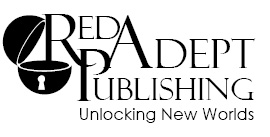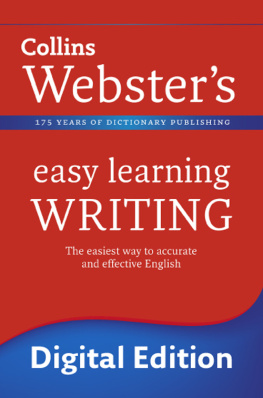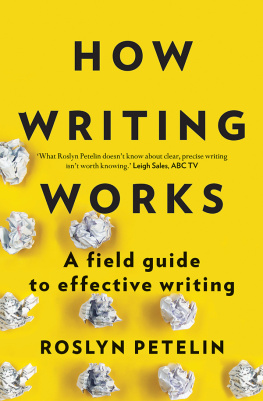

Beyond the Style Manual
Just to Be Clear
A Red Adept Publishing Book
Copyright 2015. All rights reserved.
First Epub Edition: August 2015
Red Adept Publishing, LLC
104 Bugenfield Court
Garner, NC 27529
http://RedAdeptPublishing.com/
Thank you for downloading this Red Adept Publishing eBook |
Join our mailing list and get our monthly newsletter filled with upcoming releases, sales, contests, and other information from Red Adept Publishing. |
Click here to sign up |
Or visit us online to sign up at
http://redadeptpublishing.com/subscribe-to-our-monthly-newsletter/ |
Cover and Formatting: Streetlight Graphics
No part of this book may be reproduced, scanned, or distributed in any printed or electronic form without permission. Please do not participate in or encourage piracy of copyrighted materials in violation of the authors rights. Thank you for respecting the hard work of this author.
This is a work of fiction. Names, characters, places, and incidents either are the product of the authors imagination or are used fictitiously, and any resemblance to locales, events, business establishments, or actual personsliving or deadis entirely coincidental.
Introduction
The most difficult question for writers to answer about their own writing is: Did I say what I meant to say? The writer knows the intention behind each sentence, so discerning how a reader might construe the meaning is not easy.
One of the toughest types of errors for authors to find in their own writing is misplaced or dangling modifiers. Some of these are actual grammatical errors. Others are more subjective, but they can cause readers to stumble or misunderstand a sentence. While the meaning can sometimes be inferred from context, the last thing an author wants is for a reader to be confused while trying to enjoy a novel.
Another issue that infringes on clarity is that of vague antecedents. If a reader cant tell who or what a pronoun is referring to, entire scenes can be confusing or completely misunderstood.
Finally, this guide will also address proper paragraphing, which can help writers avoid mistakes and make books flow better for a reader.
No substitute exists for having a second (or third or fourth) pair of eyes on a manuscript, whether those eyes belong to a professional editor or some knowledgeable beta readers. However, every author should understand the grammar and reasoning behind sentence structures that can cause problems for readers.
Many sections are followed by quizzes. The answers to the quizzes are on the following pages.
Dangling Participles
The most common type of misplaced modifier is the dangling participle.
A participle is a form a verb takes when its preceded by had or are. (Other forms of have or be can make a verb take a participle form, but these two are the simplest to keep in mind.)
Adding had creates the past participle, while adding are creates the present participle.
Examples:
We had turned a corner. (Turned is the past participle.)
We are turning a corner. (Turning is the present participle.)
When these participles are joined with other words, they form a participial phrase. Gerunds are participial phrases used as nouns.
Examples of Gerunds:
Writing a book is a lot of work.
Charles enjoys driving all types of cars.
Writing a book is functioning as a noun and is the subject of the first sentence. Driving all types of cars is also functioning as a noun but is the direct object of the second sentence.
The participial phrases discussed in this section are used as adjectives. They must be carefully placed to avoid dangling participles. A dangling participle occurs when it is unclear what noun the participial phrase is modifying or describing. Dangling participles can occur anywhere in a sentence but are usually found at the beginning or end. Many different methods exist for correcting them, depending on where they occur and whether or not the noun being modified appears in the sentence.
***
Opening Dangling Participles
In sentences that open with participial phrases, the phrase should always be followed by a comma. Also, the noun the phrase modifies should appear immediately after that comma. Dangling participles occur when the noun following the participial phrase is not the noun being described or doing the action.
Example 1:
John rode his horse down the winding road. Turning the next corner, the castle came into view.
Turning the corner is a dangling participle because it implies that the castle turned the corner. John was the one actually turning the corner, but John does not appear in the sentence with the participial phrase that describes his action.
Possible Fixes:
As he turned the next corner, the castle came into view.
The castle came into view when he turned the next corner.
Turning the next corner, John saw the castle.
In the first fix, the participial phrase has been replaced by an adverbial phrase. In the second, the participial phrase has been removed, and the sentence has been rewritten with an adverbial phrase at the end. In the third, the participial phrase has been kept, but it now modifies John instead of the castle.
Example 2:
Spinning in circles, dizziness overcame Marcie.
Spinning in circles is a dangling participle because the dizziness isnt doing the spinning. Marcie is the one spinning, but she appears later in the sentence.
Possible fixes:
Spinning in circles, Marcie was overcome with dizziness.
As Marcie spun in circles, dizziness overcame her.
In the first fix, Marcie is moved to the correct position immediately after the participial phrase. In the second, the participial phrase is replaced by an adverbial phrase.
***
Closing Dangling Participles
When a sentence ends with a participial phrase, a comma precedes it only if the phrase does not immediately follow the noun it modifies. Often, simply adding a comma can correct the dangling participle if the noun it modifies appears earlier in the sentence.
Example 1:
Jane stared at her screen trying to decide what to write.
Trying to decide what to write is the participial phrase. The dangling participle occurs because the screen is not trying to decide. The phrase modifies Jane, but Jane appears at the beginning of the sentence.
Possible fixes:
Jane stared at her screen, trying to decide what to write.
Trying to decide what to write, Jane stared at her screen.
Jane, trying to decide what to write, stared at her screen.
In the first fix, a comma was placed before the participial phrase. The comma signifies that the phrase modifies a noun earlier in the sentence, not the screen. In the second, the participial phrase was moved to the beginning of the sentence. This works because it modifies the subject. In the last fix, the participial phrase appears immediately after Jane. Because the phrase is not necessary to define Jane, it is set off by commas.
Example 2:
Lisa looked down at her dog then up at the window standing at attention.
Standing at attention is a dangling participle because it does not modify window. In this case, the sentence cannot be corrected by simply adding a comma before the phrase because there are two nouns earlier in the sentence that could be modified by that phrase, Lisa and dog.









